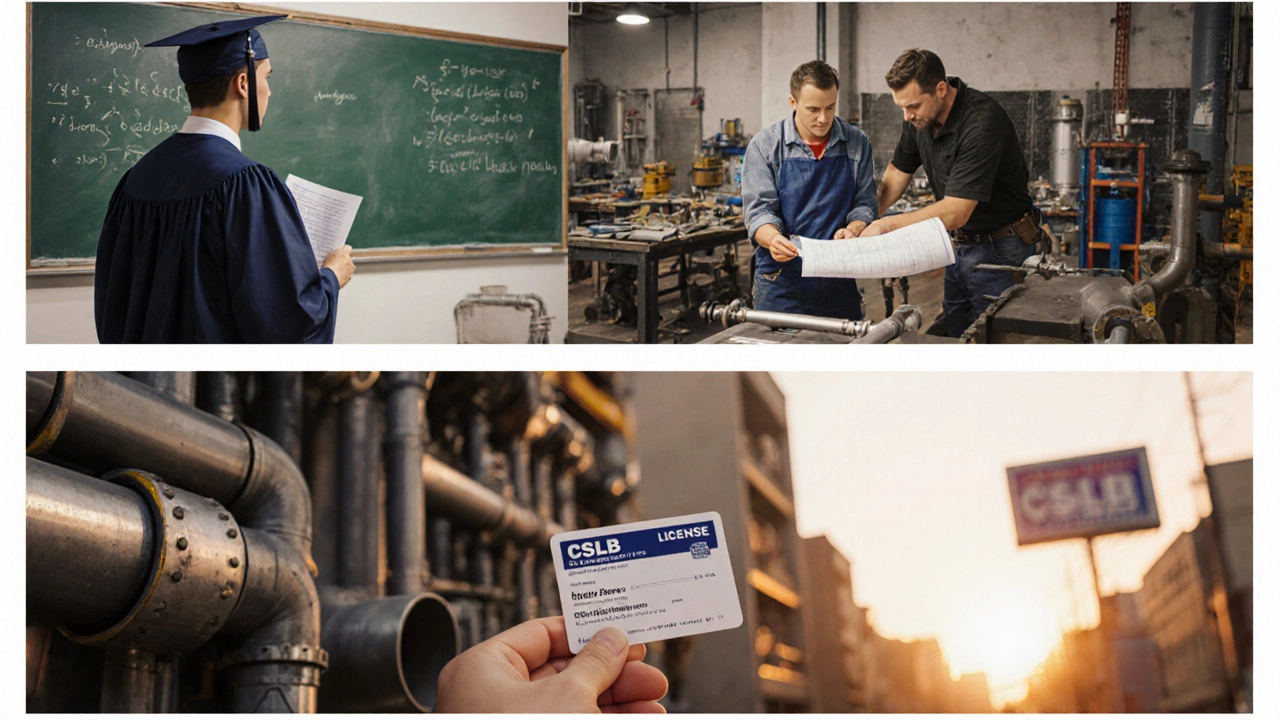Plumbers in California: Job Demand, Salary & Training Paths
 Oct, 20 2025
Oct, 20 2025
California Plumber Salary Calculator
Estimate your potential annual salary as a licensed plumber in California based on your experience and location.
Estimated Annual Salary
Based on California Employment Development Department data for 2024.
Did you know that California added more than 130,000 new housing units in 2023 alone? That construction boom translates directly into a surge for skilled trades, and plumbing sits at the heart of it. If you’re wondering whether a career as a plumber can pay off in the Golden State, the answer is a resounding yes - but only if you understand the numbers, the regional hotspots, and the right training route.
Why California Needs More Plumbers Right Now
California’s Plumbing industry covers everything from residential pipe installations to large‑scale commercial water systems is booming. The Bureau of Labor Statistics (BLS) projects a 7% growth for plumbers, pipefitters, and steamfitters in California through 2031, outpacing the national 4% average. Several factors drive this trend:
- Population growth - the state gained over 600,000 residents last year, pushing up demand for new homes and renovations.
- Strict water‑conservation codes - climate‑change legislation forces every new build to include low‑flow fixtures and grey‑water recycling, which require specialized plumbing work.
- Infrastructure upgrades - aging water mains in cities like Los Angeles and San Francisco need replacement, creating long‑term contract work for skilled tradespeople.
- Economic resilience - even during recessionary periods, construction and repair projects keep plumbers busy because water systems can’t be postponed.
What the Numbers Say About Salary and Job Outlook
According to the California Employment Development Department, the median annual wage for plumbers in 2024 was $78,200, roughly $15,000 above the national median. In high‑cost areas such as San Francisco Bay Area, senior plumbers can earn $100,000 or more with overtime and specialty allowances. Here’s a quick snapshot:
| Region | Median Salary | Annual Job Openings |
|---|---|---|
| Los Angeles Metro | $80,500 | 3,200 |
| San Francisco Bay Area | $102,000 | 1,800 |
| San Diego County | $77,100 | 1,500 |
| Statewide Average | $78,200 | 7,500 |
Beyond salary, the BLS predicts roughly 12,000 new plumbing positions will open each year across California, with a steady pipeline of retirees creating additional vacancies.
Paths to Becoming a Licensed Plumber in California
California requires plumbers to be licensed by the Contractors State License Board (CSLB). The typical route looks like this:
- Earn a high school diploma or GED - courses in math, physics, and shop help.
- Complete a trade school program that covers pipe installation, safety codes, and blueprint reading (usually 6‑12 months). Many community colleges offer associate degrees in plumbing technology.
- Enter a paid apprenticeship - the California Plumbing Apprenticeship Program pairs you with a journeyman for 4‑5 years of on‑the‑job training and classroom instruction.
- Pass the CSLB exam - the test covers state plumbing codes, business law, and trade knowledge.
- Obtain your C‑36 plumbing contractor license if you plan to run your own business.
For those who can’t commit to a full apprenticeship, some private trade schools provide accelerated certification programs that meet CSLB requirements, but you’ll still need hands‑on experience to qualify for the exam.

Regional Hotspots: Where the Jobs Are Hottest
If you’re targeting the most lucrative markets, consider these three areas:
- Los Angeles offers the highest volume of residential projects due to ongoing urban infill and a robust commercial sector.
- San Francisco Bay Area pays top dollar for specialists in high‑rise plumbing and green‑building systems, though competition for apprenticeships is fierce.
- San Diego County has steady growth thanks to military base maintenance contracts and coastal resort renovations.
Each region also has its own local code nuances. For example, Los Angeles enforces the Los Angeles County Green Building Ordinance, which mandates low‑flow fixtures in all new constructions.
Pros and Cons of a Plumbing Career in California
Here’s an honest look at the upside and the challenges:
| Pros | Cons |
|---|---|
| High earning potential, especially in Bay Area. | Licensing fees and continuing‑education costs can add up. |
| Strong job growth for the next decade. | Physically demanding work; hot climates can be tough. |
| Opportunities to start your own contracting business. | Regulatory complexity - you must keep up with ever‑changing codes. |

Checklist: Getting Started in the California Plumbing Trade
- Research accredited trade schools or community college programs in your area.
- Apply for a California apprenticeship through the Joint Apprenticeship and Training Committee (JATC) or local unions.
- Gather required documents: high‑school transcript, proof of residency, and any prior certifications.
- Study the California Plumbing Code (CPC) - the state adopts the Uniform Plumbing Code with local amendments.
- Schedule the CSLB exam, and set aside at least 4‑6 weeks for a focused study plan.
- Consider a specialty (e.g., medical gas piping, solar‑thermal water heating) to boost marketability.
Preparing for the Future: Trends to Watch
Even as demand stays high, a few trends could shape the next wave of plumbing jobs:
- Smart‑home integration - homes are now equipped with leak‑detection sensors and Wi‑Fi‑controlled valves. Plumbers who can program and install these systems will command premium rates.
- Renewable‑energy water heating - solar‑thermal and heat‑pump water heaters are gaining traction, especially after California’s recent subsidies for low‑carbon appliances.
- Prefabricated plumbing modules - large contractors are shifting to factory‑built pipe assemblies that reduce onsite labor, but they still need skilled installers for final connections.
Keeping abreast of these developments through continuing‑education courses (often offered by the California Plumbing Association) will help you stay competitive.
Frequently Asked Questions
How long does it take to become a licensed plumber in California?
Typically 4‑5 years. That includes a trade‑school program (6‑12 months) followed by an apprenticeship that meets the CSLB’s 8,000‑hour on‑the‑job requirement.
What is the average starting salary for a new plumber?
Entry‑level plumbers in California usually earn between $45,000 and $55,000 annually, depending on location and employer.
Do I need a college degree to become a plumber?
No. A high school diploma or equivalent is sufficient. The key requirements are a state‑approved apprenticeship and passing the CSLB exam.
Are there scholarships for plumbing apprentices?
Yes. Organizations like the United Association of Plumbers and the California Plumbing Association offer merit‑based scholarships and tuition assistance for approved apprenticeship programs.
What are the licensing fees?
As of 2025, the CSLB application fee is $84, the exam fee is $83, and the initial license fee is $148, plus a $25 renewal fee every two years.
If you’re ready to jump into a field that pays well, grows fast, and lets you work with your hands, plumbing in California checks all the boxes. With the right training, a clear licensing path, and awareness of regional demand, you can launch a stable, rewarding career that’s unlikely to go out of style.